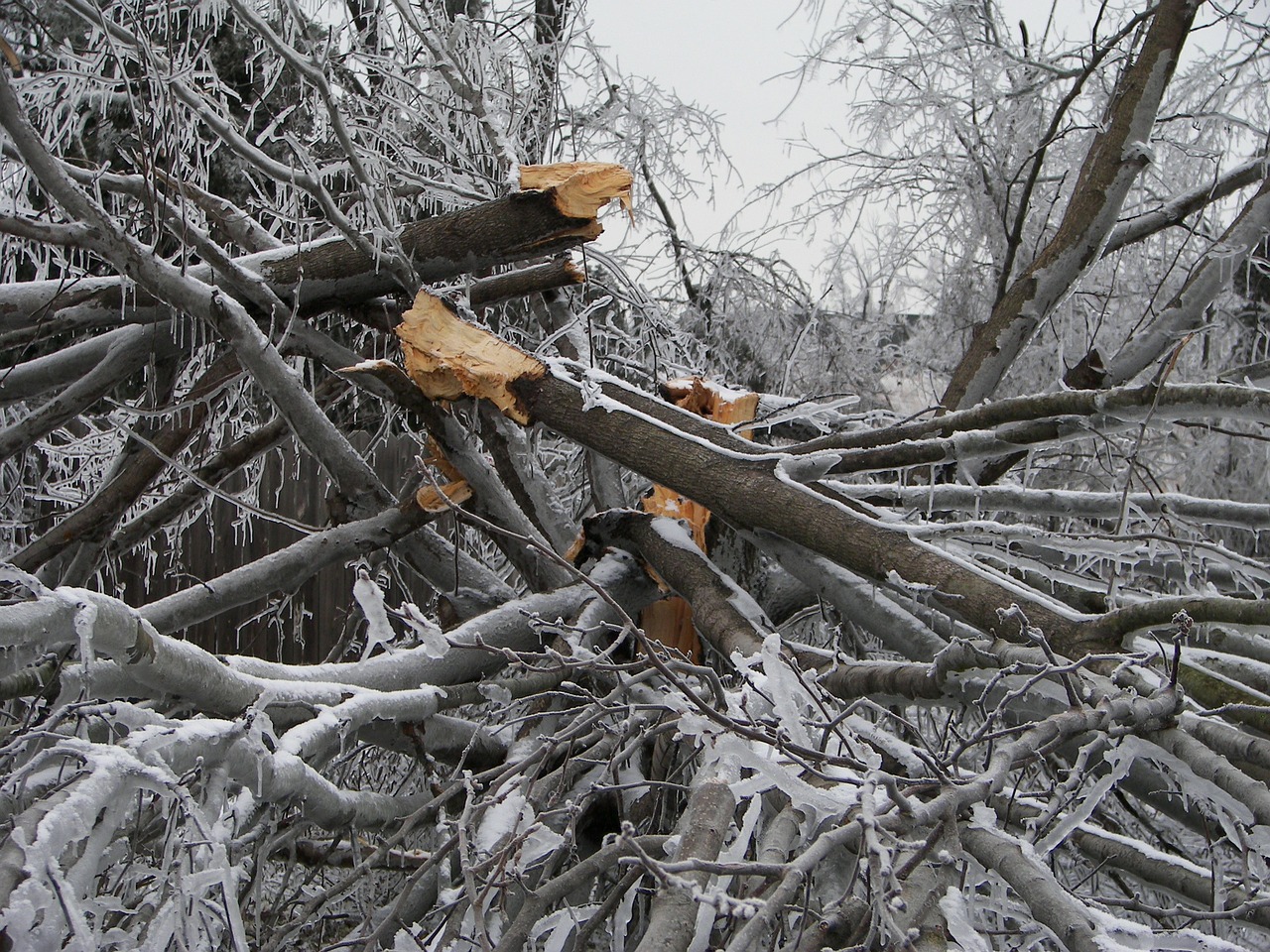After the snowstorm the St. Louis area had this January, you may be having concerns about the health and safety of your trees and property.
Up Next: 3 Ways Snow Will Damage Your Trees (If You’re Not Careful)
Recognizing winter tree damage is one of the first steps you can take to understand when your trees need care and when you should call a professional tree care company like Hansen’s Tree Service for help. Take care of your trees this winter and watch out for these five signs of winter tree damage:
Broken Branches
With a foot of snow in some areas, homeowners and businesses could expect snow buildup on their trees. Snow can get very heavy quickly, which means branches that are weak or damaged are more likely to experience breakage.
If your tree experiences broken branches do not attempt to remove them yourself, especially if they have fallen on power lines. Instead, contact a professional tree care company like Hansen’s and your electric company. The electric company will turn off the power if needed and your tree professional can safely clear the debris away.
Browning Needles
If you have evergreens on your property, you may notice browning needles as evidence of winter tree damage, or winter burn. Winter drying caused by the lack of water and salt injury are a few examples of winter damage to your evergreens.
To help prevent winter burn thoroughly water your trees and add mulch as needed. Just be sure to remember to mulch correctly.
Bark Cracking & Splitting
In the winter, if you hear what sounds like a rifle shot or see vertical cracks and bulges in your tree’s bark, it could be experiencing frost cracking or sun scald. Both sun scald and frost cracking are common winter threats to trees where fluctuating temperatures cause the bark of the tree to warm up and freeze. This causes the cells in the bark to die and split.
Bark cracking and splitting can be prevented by wrapping the trunk in burlap or chicken wire stuffed with straw to insulate the tree from fluctuating temperatures. Remember to remove it when the weather gets warmer to prevent pests and diseases from settling in.
Root Damage
Trees may experience root damage in the winter, especially if they are susceptible to frost heaving, are newly transplanted, or are young. In the case of soil heaving, the expanding and contracting of soil as it freezes and thaws can push out and expose shallow roots.
You can cut root damage off at the pass by putting your trees to bed for winter by mulching in the fall.
Bark Discoloration
Bark discoloration on your trees is evidence that it could be suffering from a salt injury. When roads and pathways are treated with salt in the winter, the product can have a detrimental effect on your trees.
Salt damage symptoms include:
- Bark discoloration
- Brown needles on evergreens
- Premature needle drop on evergreens
You can help minimize salt injury by choosing a tree that is more tolerant to salt like ginkgo, avoid planting in heavily salted areas, and irrigating the soil to leach out the salt.
Contact a professional tree care company like Hansen’s Tree Service for the best tree care and health solutions this winter, including 24/7 emergency tree services.
